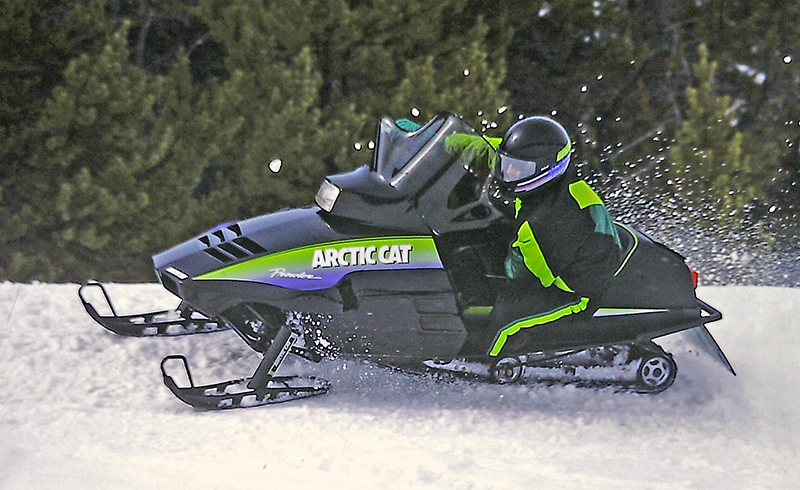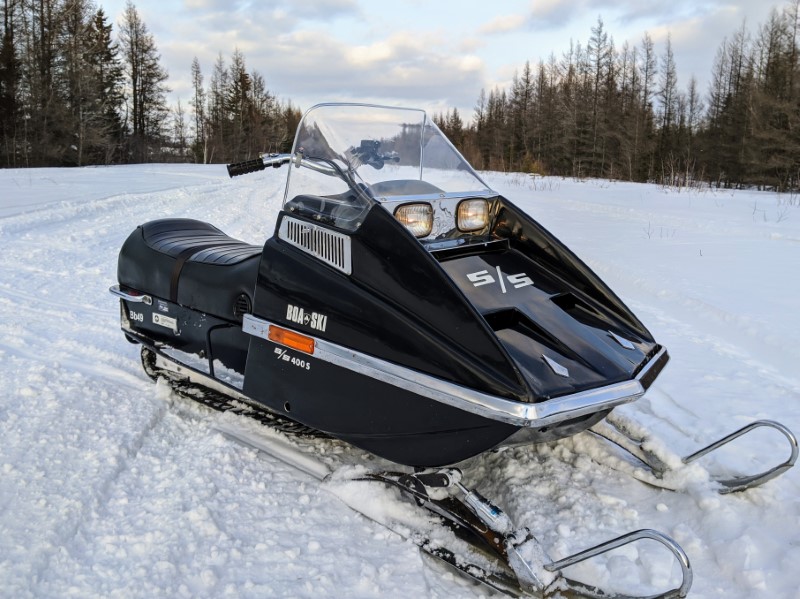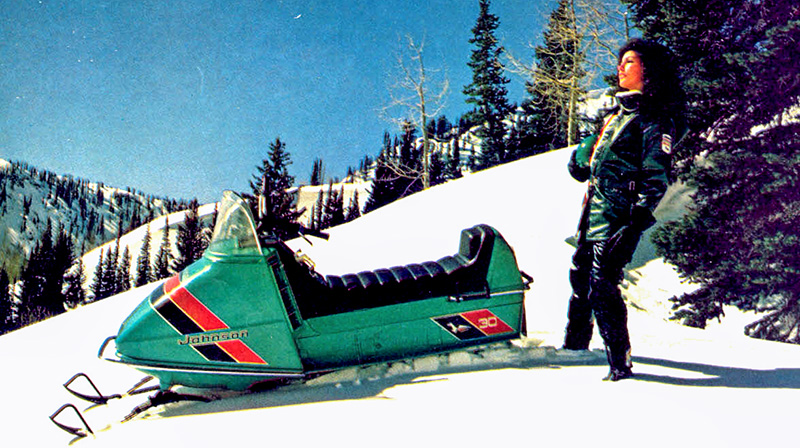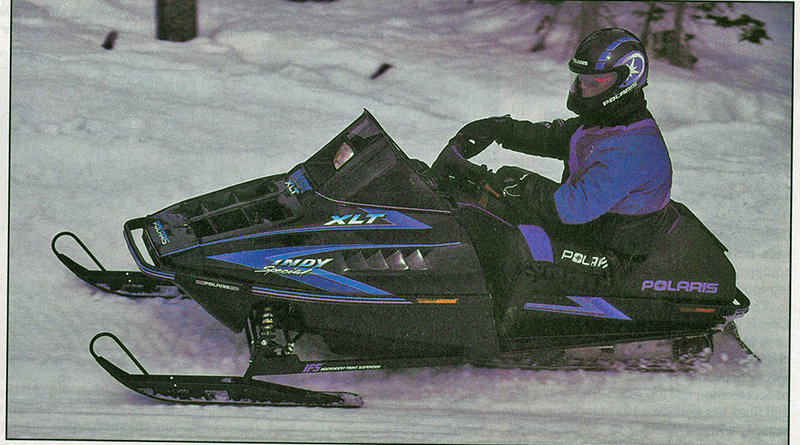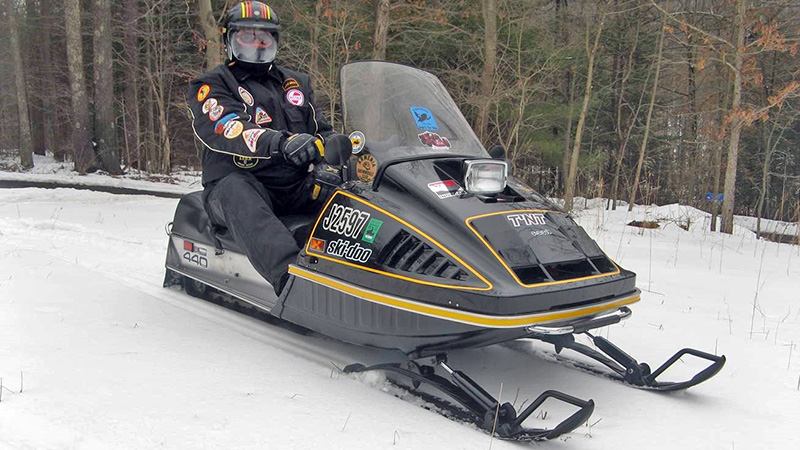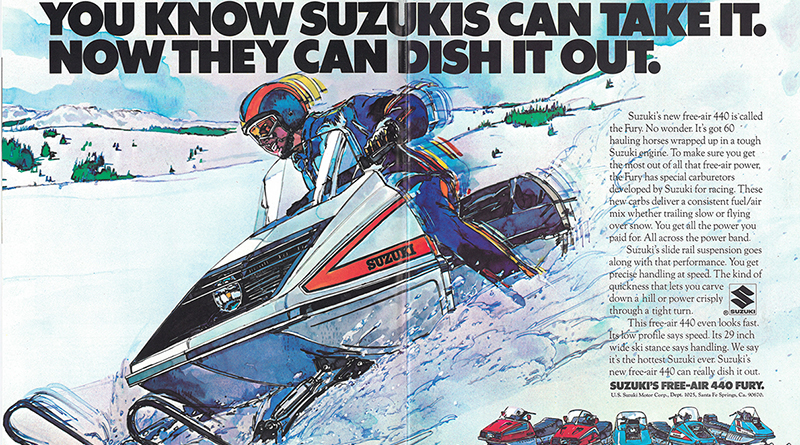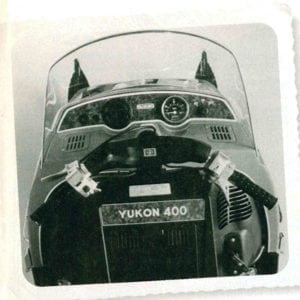
With the success of its top-of-the-line XR-440, Suzuki unleashed a new model for 1974.
It wasn’t a performance machine that decorated the snowmobile landscape at the time. It was more a machine that helped round out Suzuki’s four-sled lineup for model year 1974.
The Yukon 400 was a widetrack 2-Up that was dubbed one of the quietest snowmobiles of its time. It had an 18-inch wide track, a first for the Japanese manufacturer, and convex mirrors. Suzuki claimed the wide track helped reduce fishtailing during sudden starts and stops. Under the hood of the Yukon was a 395cc Suzuki reed-valve twin-cylinder axial fan-cooled mill that pumped out about 31 hp. While the engine was smaller than the 440cc norm of the time, Snow Goer editors who tested it claimed it could keep up with the slightly more powerful machines on twisty trails.
Also helping the Yukon was its bogie wheel rear suspension and leaf spring front suspension with one shock mounted on each ski. The above-average rear suspension, along with its big seat, soaked up the bumps adequately. The front suspension, meanwhile, had little ski flop thanks to the shocks, and it tracked straight. Steering was easy, according to editors who tested the snowmobile.
Although logic might dictate that the Yukon would be stable with its wide track, it was quite the contrary. It was below average in that department and had a tip-over angle of 41 degrees. Contributing to that tip-over angle was the high-mounted engine and 6-gallon fuel tank. The fuel tank, which was tucked into the rear of the seat, improved performance slightly by evening out the weight over the rubber track. Editors noticed that weight in acceleration and sudden stops.
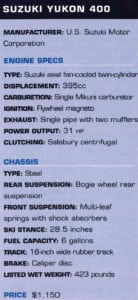
Despite some shortcomings, two characteristics of the Yukon stood out: the engine and a “complex silencing system,” Snow Goer editors said. The economical engine was fed by a single carburetor and “guaranteed a smooth start” and decent power. A test revealed the Yukon topped out at 51 mph. In the field, editors noted that the Yukon maintained peak power well. They also noted that vapor lock caused no problems in the 40-degree temperatures they encountered while testing Suzuki’s 2-Up. To help keep the engine cool and at an optimum temperature, Suzuki employed several air vents on the hood.
The quietness of the engine was a result of two mufflers Suzuki engineers used on the machine. One muffler resembled a large air silencer that measured 12 by 12 inches and was 6 inches deep. That silencer was mounted in front and on top of the engine. A large rubber hose expelled exhaust gasses into the top silencer and exited through the bottom of it into a second muffler that was mounted on the belly pan. The second muffler was long and flat. The exhaust gasses were expelled to the front of the track where the sound was muffled by the swirling snow, according to test editors.
Wrapping around the hood was a bumper that editors said “protects virtually every horizontal inch of the hood from fixed objects.” In addition to the engine, Suzuki also mounted two large metal toolboxes under the hood. If owners decided to add the optional electric start feature, one of the boxes was used to house the battery. The stylish panel in front of the driver was spring mounted for easy removal and access to the carburetor.
Overall, Snow Goer test editors liked the machine. The Yukon didn’t last long in Suzuki’s snowmobile lineup. The Japanese company stopped making snowmobiles soon after and concentrated on other powersports products.
Editor’s Note: Every issue of Snow Goer magazine includes in-depth sled reports and comparisons, aftermarket gear and accessories reviews, riding destination articles, do-it-yourself repair information, snowmobile technology and more! Subscribe to Snow Goer now to receive issues delivered to your door 6 times per year for a low cost.

